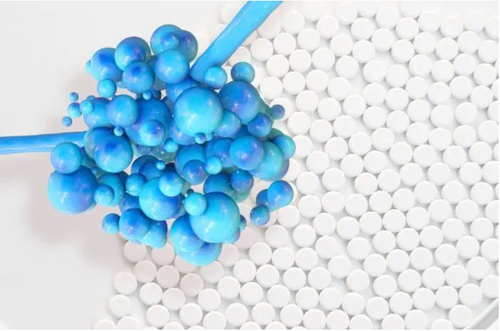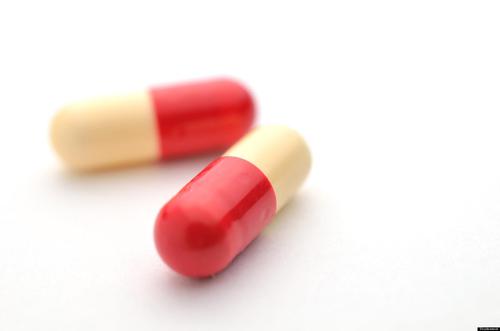Yeast Infections: What You Need to Know
Yeast infections are common infections that can occur in many different parts of the human body. They are most commonly seen around the mouth and the skin, although blood yeast infections are also possible. Luckily though, most people who find themselves affected by a yeast infection won't have to worry too much about it; in general, yeast infections are very mild and easy to treat!
But what causes yeast infections, anyway, and why should you be aware of them?
What is a Yeast Infection?

Although a lot of people find themselves struggling with a yeast infection at some point in time, they often do not recognize the symptoms or know what a yeast infection actually is. There are two primary types of yeast infections that people need to be aware of: vaginal yeast infections and penile yeast infections. If you find yourself asking the question, "How do you get a yeast infection?" then it is important that you educate yourself about this frustrating condition.
So, what types of yeast infection are there, and what characterizes these conditions?
Vaginal Yeast Infection
Vaginal yeast infections are arguably one of the most common fungal infections, or at least the most commonly recognised. Otherwise known as candidiasis, they can be extremely irritating for people who find themselves affected by the condition. Furthermore, women who have experienced a vaginal yeast infection in the past will usually be more prone to developing the condition again in the future.
It is important to note, though, that a normal and healthy vagina will still contain a balanced amount of both bacteria and yeast; it is only when this balance is upset that the yeast found naturally in the vagina can rapidly begin to grow and multiply, and this eventually results in the person's suffering from a yeast infection.
Symptoms of Vaginal Yeast Infections
Symptoms of yeast infection are itching, swelling, and irritation around the vagina. Though the condition is not a sexually transmitted disease as such, it can be transferred to others during intercourse. However, most people who are affected by a yeast infection will usually find sex uncomfortable and so may refrain from it, whenever possible. Urinating may also be painful in more serious cases of yeast infections. A rash might also develop in some people, although this could be secondary to the soreness. Any discharge from the vagina will usually be whitish-gray in color.
Causes of Vaginal Yeast Infections
There are a number of different yeast infection causes. Antibiotic usage, for example, can kill off the "good" Lactobacillus bacteria in the vagina, allowing yeast to rapidly multiply, so can pregnancy and hormone imbalances. A weakened immune system, potentially caused by other diseases or by stress, can also cause this. Poor eating habits may even be responsible for the development of a vaginal yeast infection, and diabetes can also be problematic in this regard too.
Penile Yeast Infection
Although penile yeast infections are less common than vaginal yeast infections, they are still irritating for men. Penile yeast infections can also spread to the bloodstream if they are not treated in a timely fashion, too; therefore a rapid treatment is imperative.
Symptoms of Penile Yeast Infections
A man with a penile yeast infection will often find that he may experience a great deal of discomfort. Penile infections can cause the skin of the penis to moisten and rub, and the penis itself may be itchy or otherwise sore. However, it is always important to consider that these symptoms could also be indicative of other conditions such as STIs as well, so you should always make sure to check for such problems.
Causes of Penile Yeast Infections
One of the most common causes of penile yeast infection is when a man has sexual relations with a woman who is suffering from a vaginal yeast infection. However, they can also be caused by poor hygiene, and being uncircumcised also puts a man at more risk of developing this condition.
How to Treat Yeast Infections

While yeast infections are incredibly uncomfortable, their treatment doesn't actually need to take very long or be very difficult. Indeed, yeast infections are generally extremely easy to treat with standard medications. These can be delivered as vaginal therapy for women or as oral medication. The former is usually more effective, although oral treatments are also useful in some scenarios.
Prescription Drugs for Yeast Infections
Generally, prescription drugs for yeast infections will be comprised of butoconazole, clotrimazole, or miconazole, although terconazole is also a common choice. It is important to note that these products are all oil-based, though, and can be damaging to condoms. The most common oral drug is fluconazole, and this may require numerous courses if the yeast infection is persistent.
Alternative Remedies for Yeast Infections
Alternatively, some people may want to try a home remedy for their yeast infection. These can sometimes be used alongside medicinal treatment, but it is important to check with your doctor before attempting this. Some of the most common home remedies include tea tree oil, boric acid, or even yoghurt. Natural yogurt containing live enzymes is the most effective home remedy to restore balance to the body, due to the fact that natural yogurt contains Lactobacillus probiotic bacteria that are present in a healthy vaginal or penile environment.
In Summary
Yeast infections can be a nuisance for many people, and most of us can expect to get one at least once in our lives. However, they are rarely dangerous and are usually more of a discomfort than an illness. They can often be treated with a course of antibiotics or other home remedies.
YOU MAY LIKE
-
How to Stop Heart Palpitation
-
Best Tips to Get Rid of Milia
-
My Ears Ache When Swallowing, Why?
-
Top Remedies to Remove Gum Disease
-
Top 9 Proven Ways to Get Rid of Head Lice
-
Top Symptoms and Tips for High Blood Pressure
-
Best Home Remedies to Ease Your Sinus Problems
-
How to Treat a Boil - Best Home Remedies
-
Key Causes and Best Remedies for Itchy Bum Hole
-
Best Remedies to Reduce Cholesterol Naturally
